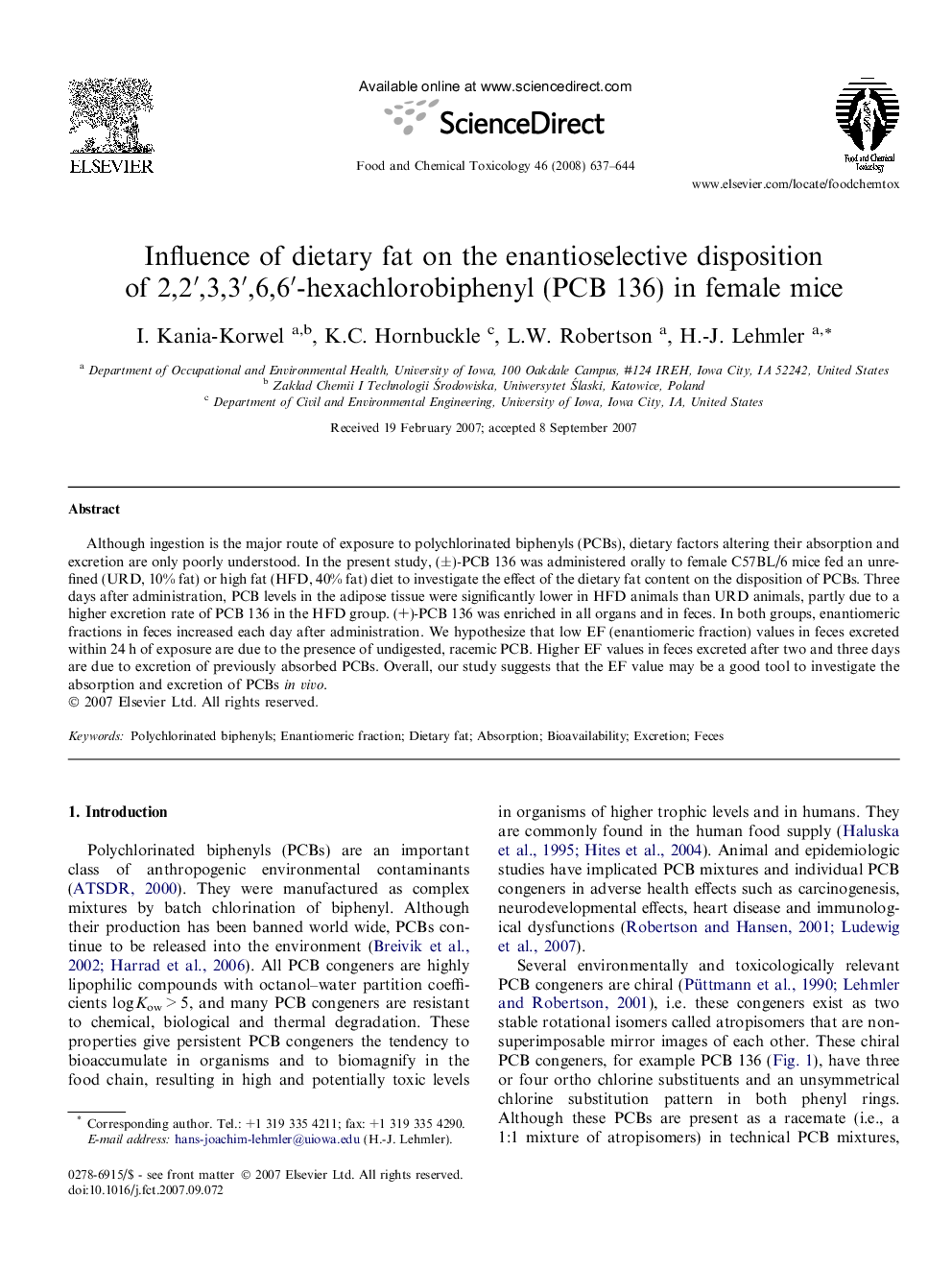| Article ID | Journal | Published Year | Pages | File Type |
|---|---|---|---|---|
| 2587110 | Food and Chemical Toxicology | 2008 | 8 Pages |
Although ingestion is the major route of exposure to polychlorinated biphenyls (PCBs), dietary factors altering their absorption and excretion are only poorly understood. In the present study, (±)-PCB 136 was administered orally to female C57BL/6 mice fed an unrefined (URD, 10% fat) or high fat (HFD, 40% fat) diet to investigate the effect of the dietary fat content on the disposition of PCBs. Three days after administration, PCB levels in the adipose tissue were significantly lower in HFD animals than URD animals, partly due to a higher excretion rate of PCB 136 in the HFD group. (+)-PCB 136 was enriched in all organs and in feces. In both groups, enantiomeric fractions in feces increased each day after administration. We hypothesize that low EF (enantiomeric fraction) values in feces excreted within 24 h of exposure are due to the presence of undigested, racemic PCB. Higher EF values in feces excreted after two and three days are due to excretion of previously absorbed PCBs. Overall, our study suggests that the EF value may be a good tool to investigate the absorption and excretion of PCBs in vivo.
